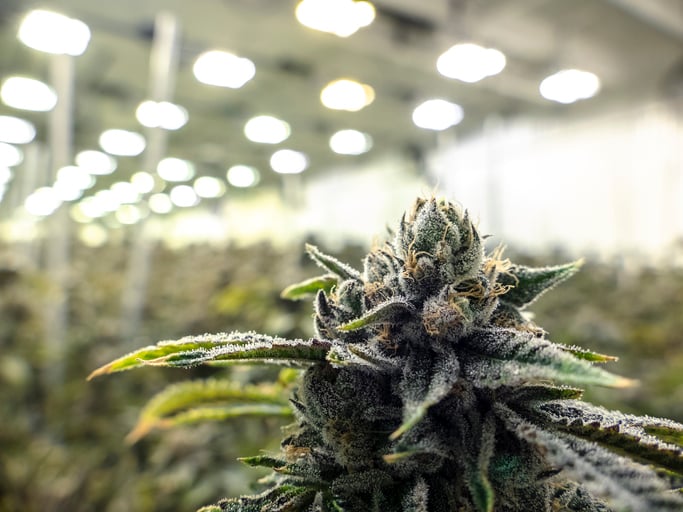Getting a high from using tetrahydrocannabinol (THC) is one of the key reasons people use marijuana. But the potency level of THC has been rising quickly over the years, and pot is much stronger than it was in the past. However, not everyone is looking to get as high as possible, and that's why there could be a more prominent trend among casual users: "lite" bud.
Company launches "LiteBud" brand
In January, Vireo Health (VREOF +5.60%) announced it was launching a brand of products dubbed "LiteBud" in an attempt to meet the needs of consumers looking for a buzz as opposed to getting downright stoned.
One of the dangers for new marijuana users is that THC levels can be very high and lead to some bad experiences and unwanted side effects. Rather than producing a calming effect, high THC levels can lead to panic attacks and increase a person's paranoia and anxiety. For people consuming marijuana for the first time, this can create a negative experience with pot and put people off cannabis right from the get-go.

Image source: Getty Images.
The THC percentage, which is the THC content as a percentage of the flower's dry weight, indicates how potent the cannabis product is. From 1995 to 2014, the Drug Enforcement Agency saw THC potency levels rise from 4% to 12%. Today, however, it's possible to find products that have THC levels of more than 25%.
Why there's a need for low-THC products
Cannabis users don't need high levels of THC to get a high or the calming effect they're after. And that's where a "lite" product may have a broad appeal. A less potent product may help users avoid unexpected side effects. Delivering a positive, consistent experience can be key to attracting and keeping new cannabis users.
Relying on potency to evaluate marijuana also may not be ideal, as THC percentages can often be inaccurate and inflated. Different testing labs in different states test cannabis using varying methods and technology, and thus some of those highly potent marijuana products may not be as potent as users expect them to be.
Without standardized testing procedures across the country, there's plenty of room for discrepancies to take place. That's an additional reason why mainstream cannabis consumers may not have an incentive to seek out high-THC products. Not only could the effects be adverse, but the potency levels may not be as advertised.
What does this mean for investors?
Vireo's executive chairman is former Canopy Growth (CGC 7.15%) CEO Bruce Linton, who knows a thing or two about the cannabis industry. And for a large cannabis company like Canopy Growth to be successful and reach a wide audience, it needs to offer a variety of products, including ones with high and low levels of THC. It's a way for a company to hedge its bets and see what's popular with consumers and what isn't.
The edible and ingestible market, also known as "cannabis 2.0," officially opened for business in Canada in October 2019; Canopy Growth announced in September that it had 50 products it was working on for the new segment of the market.
Canopy Growth's focus on offering many products in many different parts of the world has helped make it a strong brand. It even has a deal in place with Acreage Holdings that's ready to go once cannabis is legal federally in the U.S.
When choosing a marijuana stock, cannabis investors should consider the breadth and depth of the products companies offer to see if they're overly dependent on one particular niche or segment of the market. A company with those qualities could make it a much riskier investment. Investors shouldn't be surprised to see more low-potency options hit the cannabis market in the future.







